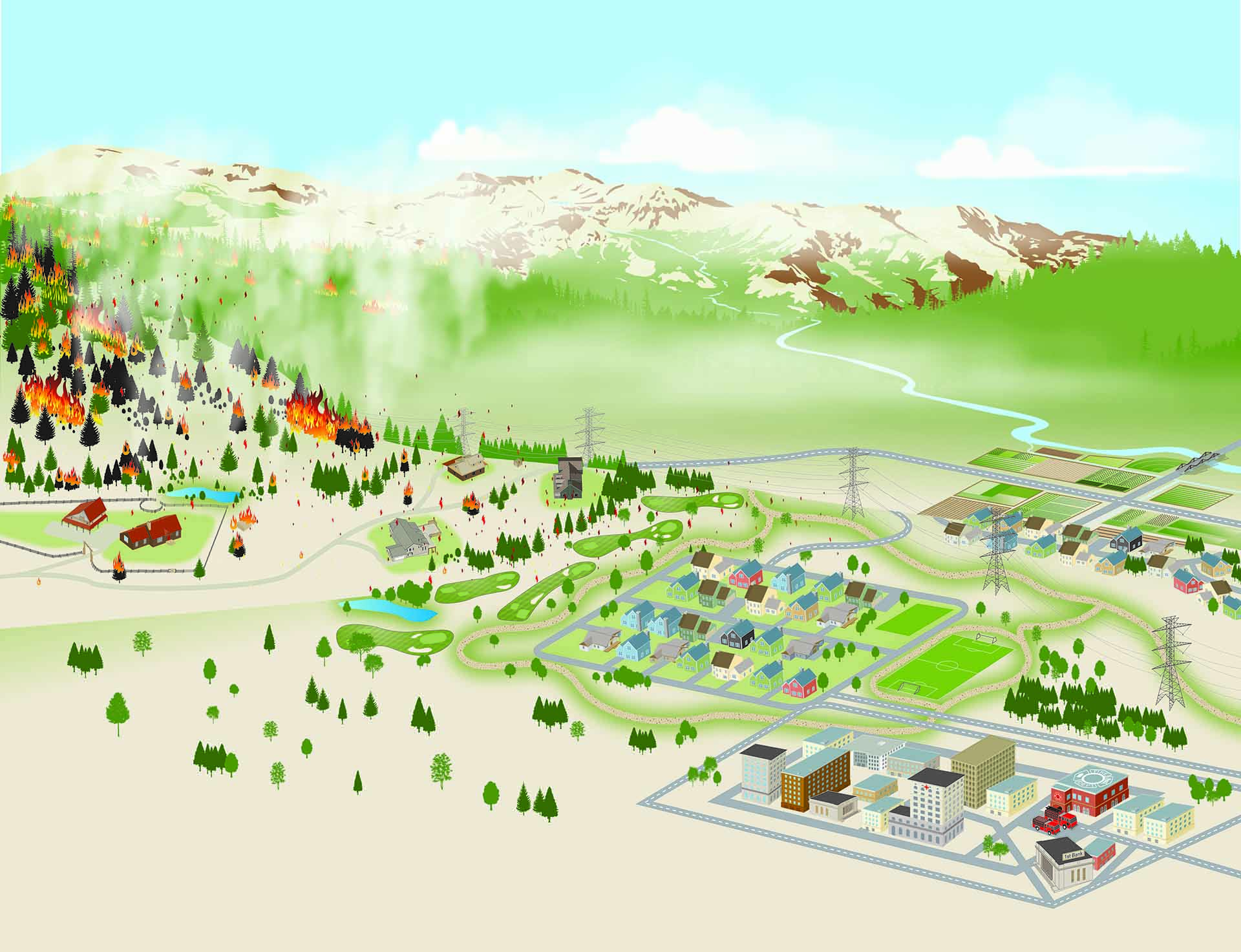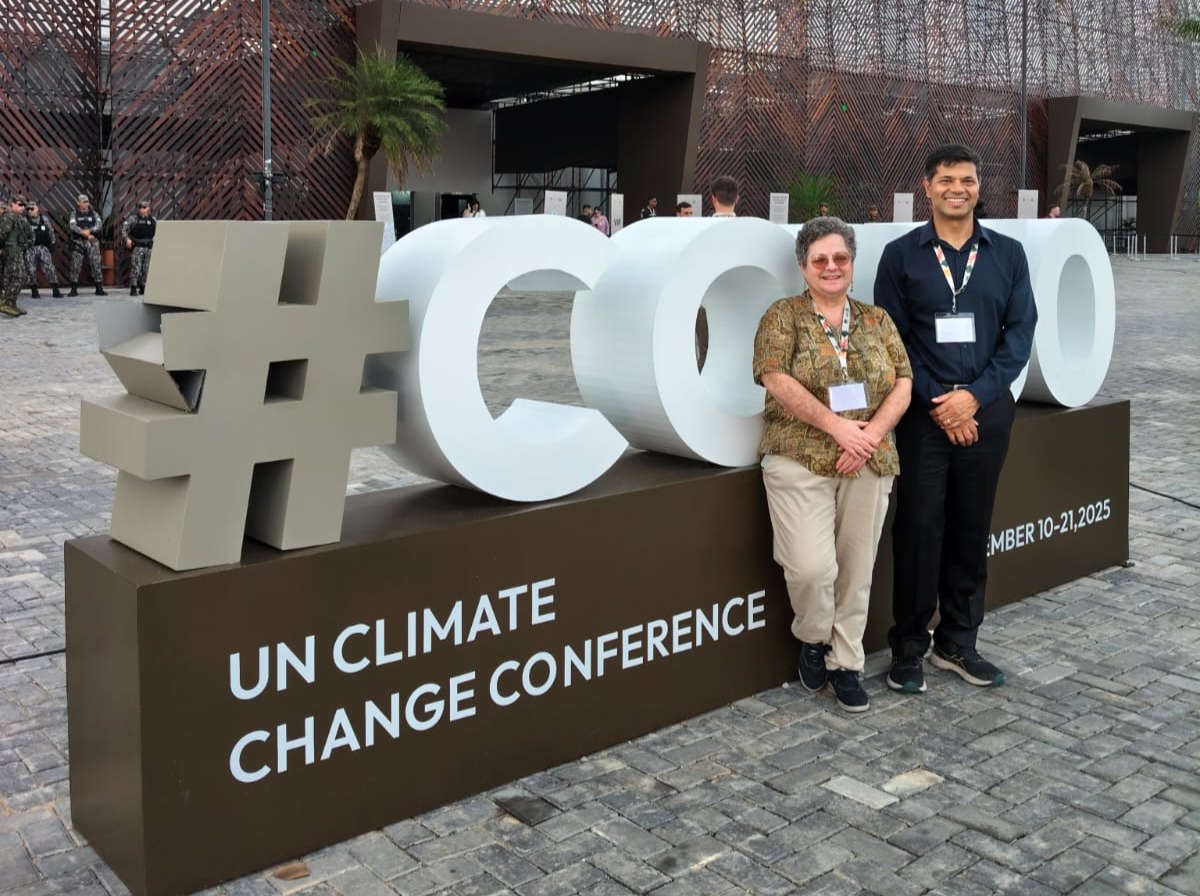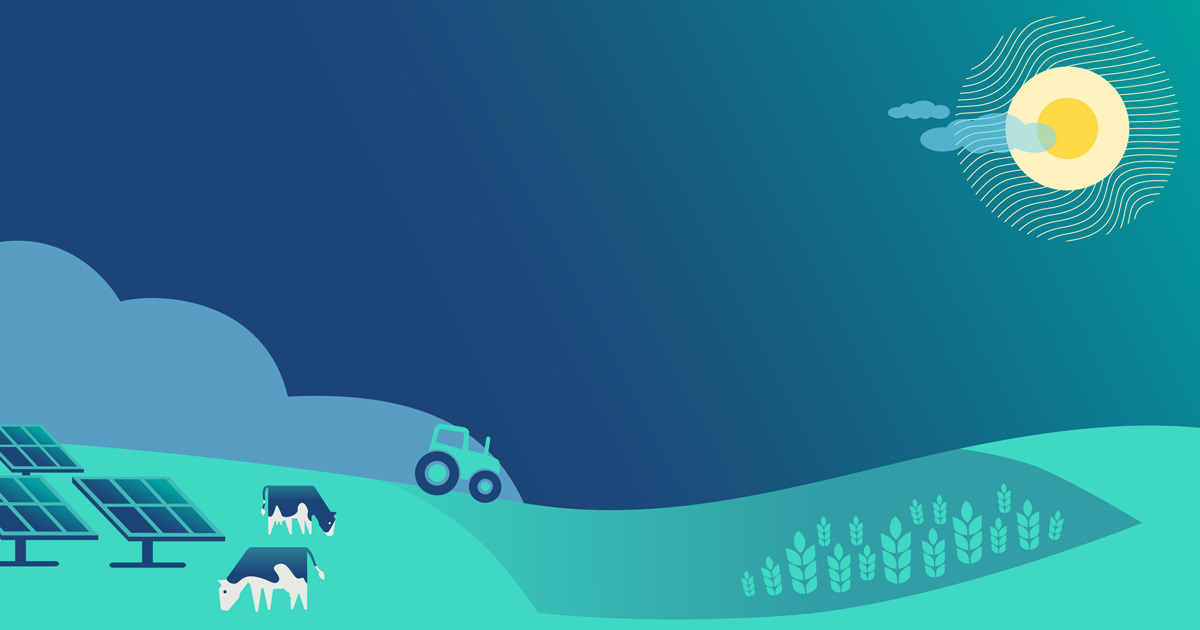Land Use, Land Value & Tenure – Farmland Value – Economic Research Service (.gov)

Report on U.S. Farmland Real Estate Value and its Implications for Sustainable Development Goals
Executive Summary
This report analyzes trends in United States farm real estate values, contextualizing the data within the framework of the United Nations Sustainable Development Goals (SDGs). In 2025, farm real estate, encompassing land and structures, is forecasted to constitute $3.67 trillion, or 83.6 percent, of total U.S. farm assets. Following a period of stabilization, farmland values have shown consistent appreciation since 2021. This trend has significant implications for achieving key SDGs, including No Poverty (SDG 1), Zero Hunger (SDG 2), Decent Work and Economic Growth (SDG 8), and Life on Land (SDG 15). The economic health of the agricultural sector, reflected in land values, is a critical indicator of rural prosperity, food production capacity, and sustainable land management practices.
National Farmland Value and Rental Market Analysis
Overall Valuation and Growth Trends
The national average value of U.S. farmland has continued its upward trajectory, reflecting the sector’s economic condition. This growth is a key factor in the asset wealth of farming communities, directly impacting SDG 1 (No Poverty).
- Average Value (2025): The U.S. average value for farmland reached $4,350 per acre.
- Annual Growth (2024-2025): Values increased by 4.3 percent nominally, or 1.9 percent when adjusted for inflation.
- Five-Year Growth (2019-2024): The compound annualized growth rate (CAGR) over the preceding five-year period was 5.8 percent, or 2.0 percent after adjusting for inflation.
Agricultural Land Rental Rates
Rental costs, a primary operational expense for many farmers, influence farm profitability and food production costs, which are central to SDG 2 (Zero Hunger). In 2025, inflation-adjusted rental rates saw a slight decrease.
- Cropland Rental Rate: The average U.S. cropland rental rate decreased by 1.7 percent to $161 per acre.
- Pastureland Rental Rate: The average pastureland rental rate decreased by 2.4 percent to $15.5 per acre.
Analysis of Regional and Land-Use Disparities
Geographic Variations in Farmland Value
Significant regional disparities in land value and growth rates highlight uneven economic conditions across the country, affecting progress toward SDG 8 (Decent Work and Economic Growth) at a local level.
- High-Value Regions: The Corn Belt reported the highest farm real estate values, averaging $8,250 per acre, nearly double the national average.
- Low-Value Regions: The Mountain region recorded values less than half the national average, at $1,660 per acre.
- Growth Rate Disparities (2019-2024): The Northern Plains region experienced the highest real annualized growth rate at 3.5 percent, while the Delta States region saw the lowest growth at 0.1 percent.
Valuation by Agricultural Land Use
The economic valuation of different land uses provides insight into land management incentives, which is critical for SDG 15 (Life on Land). Cropland consistently commands a higher value than pastureland due to greater returns.
- Cropland Value (2025): Averaged $5,830 per acre, a 2.2 percent inflation-adjusted increase from 2024.
- Pastureland Value (2025): Averaged $1,920 per acre, a 2.4 percent inflation-adjusted increase from 2024.
- Value Premium: The premium for cropland is substantial. In the Pacific region, for example, the average cropland value ($9,830 per acre) was over four times higher than the average pastureland value ($2,450 per acre).
Implications for Sustainable Development Goals (SDGs)
SDG 1 (No Poverty) & SDG 8 (Decent Work and Economic Growth)
Farm real estate is the primary asset for farming households, making its value a direct indicator of rural wealth and economic security.
- Asset Wealth: Appreciating land values contribute to the net worth of farm owners, providing a financial buffer against poverty (SDG 1).
- Economic Viability: Stable land values support the economic foundation of the agricultural sector, promoting rural economic growth and sustaining employment (SDG 8).
- Regional Equity: The wide disparities in regional land values point to the need for targeted economic development strategies to ensure equitable growth across all agricultural communities.
SDG 2 (Zero Hunger)
The value and accessibility of agricultural land are fundamental to ensuring a resilient and sustainable food production system.
- Food Production Costs: Land values and rental rates are significant factors in the cost of producing food, ultimately affecting food affordability for consumers.
- Access for New Farmers: High land values can create a substantial barrier to entry for new and young farmers, posing a long-term challenge to agricultural succession and food security.
- Sustainable Agriculture: The economic pressure of high land costs can influence farming practices, underscoring the need for policies that support sustainable and productive agriculture.
SDG 15 (Life on Land)
Economic drivers, particularly the valuation of different land uses, heavily influence land management decisions and their environmental impact.
- Land Use Incentives: The significant value premium on cropland over pastureland creates a strong economic incentive to convert land for cultivation, which can impact biodiversity and ecosystem services.
- Conservation Efforts: Understanding these economic pressures is essential for designing effective policies that encourage the conservation of natural habitats, forests, and grasslands.
- Sustainable Management: Monitoring the relationship between land value and land use is critical for promoting the sustainable management of terrestrial ecosystems and halting biodiversity loss.
Analysis of Sustainable Development Goals in the Article
1. Which SDGs are addressed or connected to the issues highlighted in the article?
The article on farmland value connects to several Sustainable Development Goals (SDGs) by providing economic data on the primary resource for food production and a significant component of the rural economy. The following SDGs are relevant:
- SDG 2: Zero Hunger: The article’s entire focus is on the value of agricultural land (cropland and pastureland), which is the fundamental asset for food production. The economic health and valuation of this land are directly linked to the capacity and stability of the food supply system.
- SDG 8: Decent Work and Economic Growth: Farmland is a major economic asset in the United States. The article details its total value (“$3.67 trillion”) and its growth rate, which are key indicators of economic performance and wealth generation within the agricultural sector, contributing to overall national economic growth.
- SDG 10: Reduced Inequalities: The article explicitly highlights significant economic disparities between different regions of the country. It points out that “farm real estate values in the Corn Belt are nearly twice the national average, while farmland real estate values in the Mountain region are less than half the national average,” illustrating regional economic inequality.
- SDG 11: Sustainable Cities and Communities: A connection is made by identifying “urban proximity” as a key factor influencing farmland values. This points to the economic pressures and land-use conflicts at the interface of urban and rural areas, a critical aspect of sustainable regional planning.
- SDG 15: Life on Land: The article provides an economic valuation of different types of terrestrial ecosystems used for agriculture (cropland and pastureland). This economic data is fundamental for understanding the pressures on land use and for integrating the value of land resources into national economic planning and sustainable management strategies.
2. What specific targets under those SDGs can be identified based on the article’s content?
Based on the article’s focus on the economic valuation of agricultural land, the following specific SDG targets can be identified:
- Target 2.3 (under SDG 2): “By 2030, double the agricultural productivity and incomes of small-scale food producers…” While not focused on small-scale producers, the article provides data on farm real estate value, which is a primary component of farmers’ wealth and a determinant of their income potential. Data on land values and rental rates are essential for assessing the economic viability of farming operations.
- Target 8.1 (under SDG 8): “Sustain per capita economic growth in accordance with national circumstances…” The article directly contributes to this target by measuring the growth in the value of a key economic asset. It states, “Over the previous 5-year period (2019 to 2024), the compound annualized growth rate (CAGR) was 5.8 percent, or 2.0 percent after adjusting for inflation,” which is a direct measure of economic growth in the farm sector.
- Target 11.a (under SDG 11): “Support positive economic, social and environmental links between urban, peri-urban and rural areas…” The article supports this target by acknowledging that the USDA studies the impact of “urban proximity” on farmland values. This highlights the economic link between urban expansion and rural land resources, which is a critical consideration for regional development planning.
- Target 15.9 (under SDG 15): “By 2020, integrate ecosystem and biodiversity values into national and local planning, development processes, poverty reduction strategies and accounts.” The article is a form of national accounting for land resources. By providing distinct valuations for cropland and pastureland, it contributes economic data that can be integrated into broader national accounts and planning processes, reflecting the economic value of these managed ecosystems.
3. Are there any indicators mentioned or implied in the article that can be used to measure progress towards the identified targets?
Yes, the article provides several specific quantitative indicators that can be used to measure progress towards the identified targets:
- For SDG 2 & 15: The article provides direct financial valuations of agricultural land, which serve as indicators of the economic foundation of the food system and the value of land resources.
- Indicator: Average value of farmland per acre. The article specifies this as “$4,350 per acre” for 2025.
- Indicator: Differentiated land use value. The article provides separate values for “U.S. average cropland values” ($5,830 per acre) and “average pastureland values” ($1,920 per acre).
- Indicator: Annual rental cost of agricultural land. The article states this is “$161” for cropland and “$15.5 per acre” for pastureland.
- For SDG 8: The article uses a standard economic metric to measure the growth of asset value over time.
- Indicator: Compound Annualized Growth Rate (CAGR) of farmland value. The article quantifies this as “5.8 percent” (nominal) and “2.0 percent after adjusting for inflation” for the 2019-2024 period.
- For SDG 10: The article provides data that can be used as an indicator of regional economic disparity.
- Indicator: Regional variation in farm real estate values. The provided table details these values, ranging from “$8,250” in the Corn Belt to “$1,660” in the Mountain region, directly measuring the gap.
- For SDG 11: The article implies an indicator related to land use planning.
- Indicator (Implied): The economic impact of urban proximity on farmland value. While not quantified, the mention that this is studied implies it is a measurable indicator used in economic analysis for regional planning.
4. Summary Table of SDGs, Targets, and Indicators
| SDGs | Targets | Indicators |
|---|---|---|
| SDG 2: Zero Hunger | Target 2.3: Double agricultural productivity and incomes of food producers. | Average value of farmland per acre ($4,350); Annual rental cost of cropland ($161/acre) and pastureland ($15.5/acre). |
| SDG 8: Decent Work and Economic Growth | Target 8.1: Sustain per capita economic growth. | Compound Annualized Growth Rate (CAGR) of farmland values (5.8% nominal, 2.0% inflation-adjusted). |
| SDG 10: Reduced Inequalities | Addresses the overall goal of reducing inequality within and among countries. | Regional variation in farm real estate values (e.g., Corn Belt at $8,250/acre vs. Mountain region at $1,660/acre). |
| SDG 11: Sustainable Cities and Communities | Target 11.a: Support positive economic links between urban, peri-urban and rural areas. | The economic impact of “urban proximity” on farmland value (mentioned as a factor studied by USDA). |
| SDG 15: Life on Land | Target 15.9: Integrate ecosystem values into national planning and accounts. | Specific valuation of different land uses: Cropland value ($5,830/acre) and Pastureland value ($1,920/acre). |
Source: ers.usda.gov

What is Your Reaction?
 Like
0
Like
0
 Dislike
0
Dislike
0
 Love
0
Love
0
 Funny
0
Funny
0
 Angry
0
Angry
0
 Sad
0
Sad
0
 Wow
0
Wow
0



















































.jpg.webp?itok=0ZsAnae9#)


























